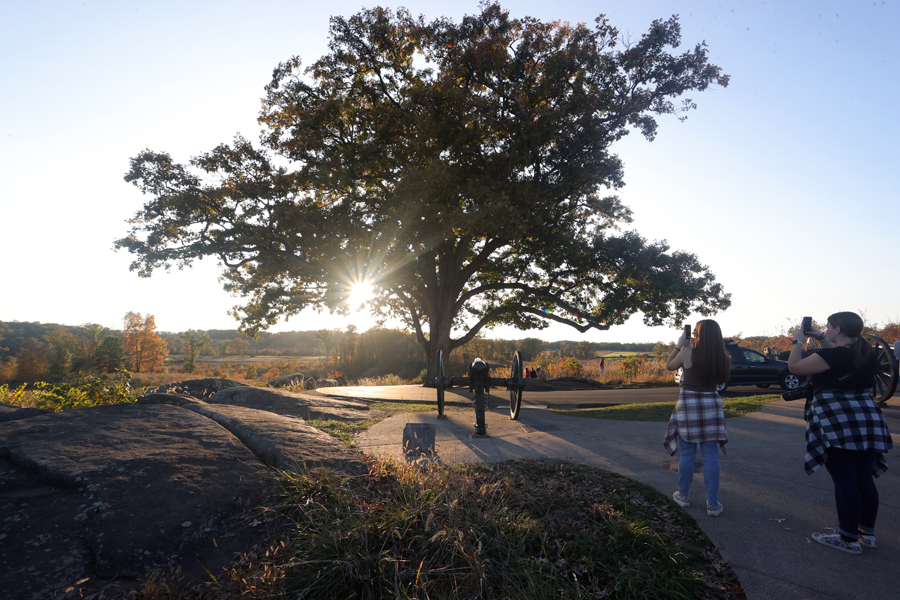By Kenneth Hammontree
When I was a little boy back in the 1950’s, my father would always tell me to be a good boy all year long, or St. Nick would not show up. I would then run around asking everyone who is this person. I was confused as to who St. Nick was in relation to Santa Claus. It seemed like no one could tell me, including my dad.
Who in the world is St. Nick, I thought? Then, one of my teachers threw in the mix to my confusion, by telling me he is Father Christmas. Okay. Now I really became confused. I began questioning what did any of this have to do with the birth of Jesus Christ? The Christmas story.
Since then, I have found out what really happened to the Christmas story and Santa Claus. How did we travel from St. Nicolas in the third century to the modern jolly old elf Santa? So, you are asking what then is the truth? Will the real person please step forward.
As an adult I did a little research and discovered that the story of Santa Claus begins with the third century Bishop Nicholas of the village of Patara (Myra) in Asia Minor. At that time the area was Greek and is now on the southern coast of Turkey.
Nicolas’ parents were very wealthy and raised him to be a devout follower of Jesus Christ. When he was around eighteen years old, a plague took both parents, and his uncle who was also a devout Christian took him in.
Because of the plague, many homes in the village of Patara suffered the loss of parents and loved ones and had no means of support. Nicholas, who was very wealthy, decided to be obedient to the words of Christ, “Sell all that thou hast, and distribute unto the poor, and thou shall have treasure in heaven: and come, follow me.”
That is what Nicolas did. He began supporting the widows, and the orphans in the community. Later he was appointed Bishop of Myra, when he was only twenty-two years old, and he became the minister of three churches in the surrounding area.
Nicholas saw the suffering increase, especially during the winter months and he decided to help, using his wealth. He gathered his Deacons and Elders together, and other help in the community, purchasing nuts, apples and oranges, and wood and coal for heat. Many of the women made honey cakes and began to distribute them throughout his churches in the winter months.
Bishop Nicholas wanted to remain anonymous and decided to visit the homes late at night when everyone was sound asleep. Along with his Deacons and Elders of the church, they traveled across the community leaving the baskets of food, coal and wood and in some cases a bag of gold and silver.
There were several very poor families in his church, with three or four daughters who did not have anything of value for prospective husbands, called a dowry. Nicholas decided to place three gold coins in a bag and throw it through a window late at night, to keep the girls from being sold into slavery.
The bags of gold and silver are said to have landed in wooden shoes by the fireplace. This led to the custom of children placing shoes by the fire or hanging their socks on the mantle to dry.
When the Teutonic (German) tribes adopted Christianity, the story of Bishop Nicholas spread from village to village. Children began placing their shoes and socks by the fireplace. After his death in AD 325 on December 6th the Church made him a Saint, Saint Nicholas the gift giver.
Under the Roman Emperor Diocletian, who erroneously fixed the date of Christ’s birth on December 25th 1 AD. and at the same time ruthlessly persecuted Christians, Bishop Nicholas suffered for his faith, and was exiled and imprisoned for several years.
After his release, Nicholas attended the Council of Nicaea in AD 325 which was the first council of Bishops in the history of the church convened by Constantine.
In the 1840’s Father Christmas began to replace St. Nicholas, and take on Santa’s attributes of the Christmas gift-bringer.
The change to our modern image of Father Christmas/Saint Nicholas was the invention of Coca Cola marketing in 1931. Winter, being the least thirsty time of the year, it was decided to market an association with Father Christmas and Saint Nicholas, showing him as a friendly portly man in the red and white colors of Coca Cola. This is now become his dominant image, a long way from Saint Nicholas and his giving to the suffering and needy.
Modern dictionaries consider the terms Father Christmas and Santa Claus to be synonymous. The respective characters are now, for all intents and purposes, indistinguishable from Saint Nicholas, who has long disappeared in the Western culture. Although, St. Nicholas is still very popular in the Eastern countries such as Russia, the Ukraine, Bulgaria and Turkey, and venerated by Catholics and Orthodox Churches.
It has been a long journey for our Old Saint Nick of the Third Century, and yet somehow, his beliefs in giving as God has given to us, when the WORD became flesh, has been carried over for some today. It has always been better to give than receive, as Nicholas’ favorite Biblical Words express in Matthew 25: 35-36, “For I was hungered, and ye gave me meat: I was thirsty, and ye gave me drink: I was a stranger and ye took me in: Naked, and ye clothed me: I was sick, and ye visited me: I was in prison, and ye came unto me.” All wonderful Christmas gifts, I believe old Saint Nick would be pleased with today.
Have a Blessed and wonderful Christmas of giving.
Kenneth Hammontree is a local author, historian and lecturer and founder of Living History Productions











